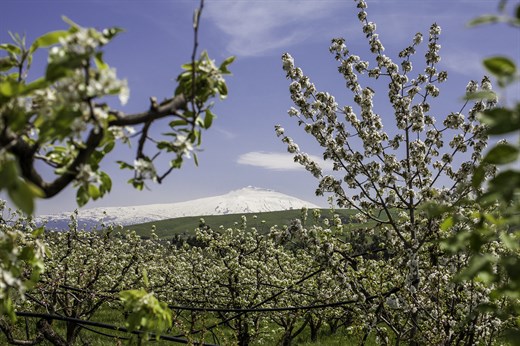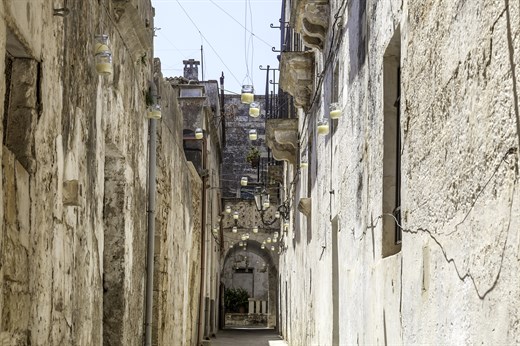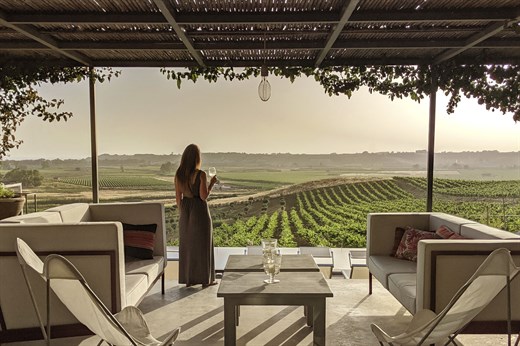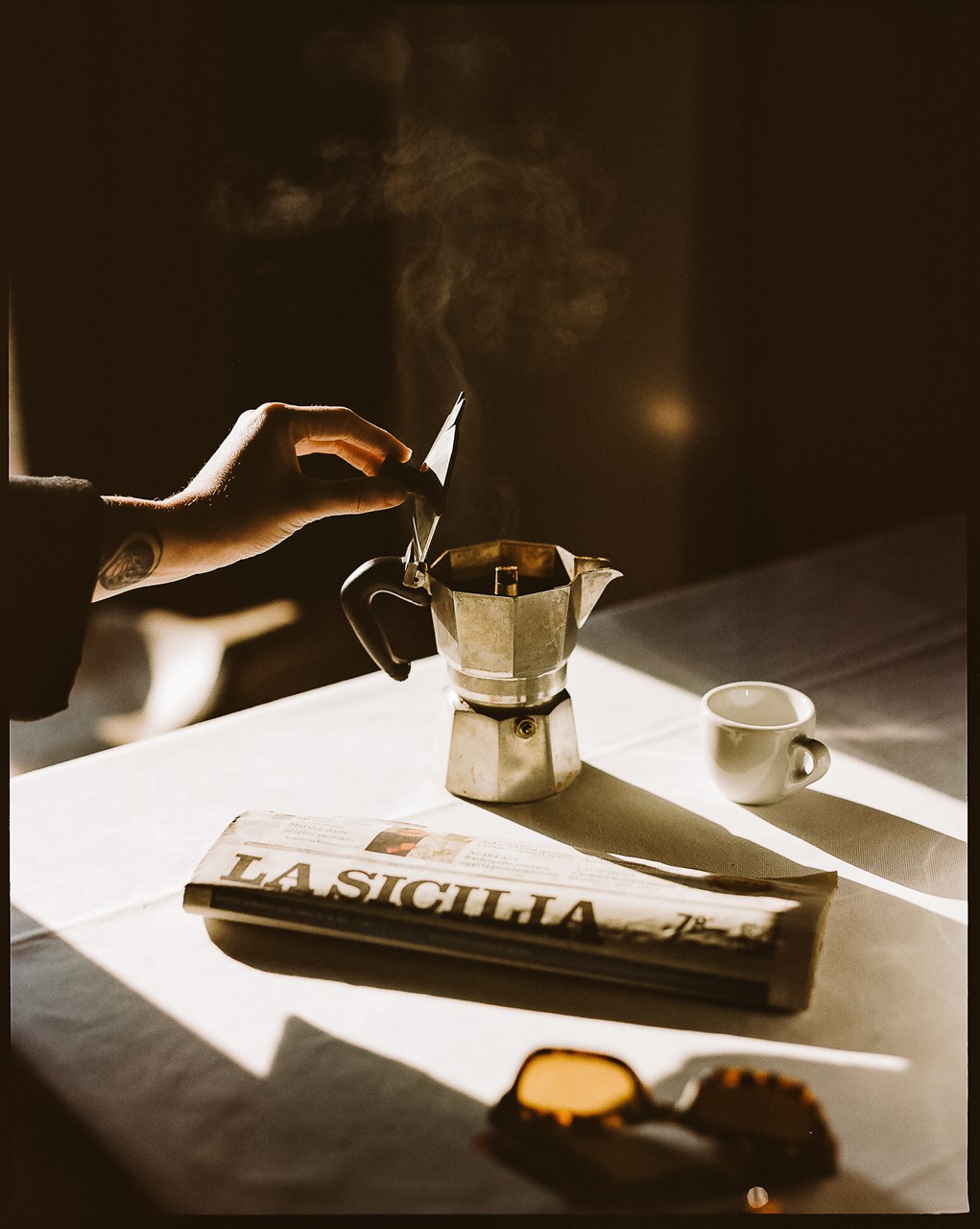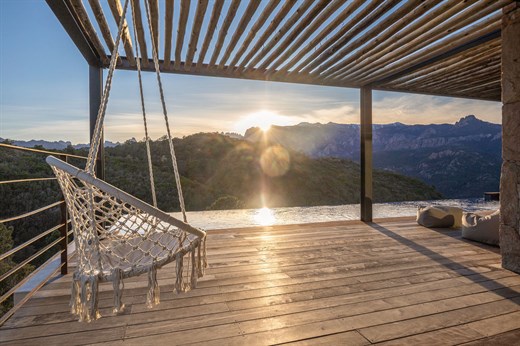Must-see archaeological sites in Sicily
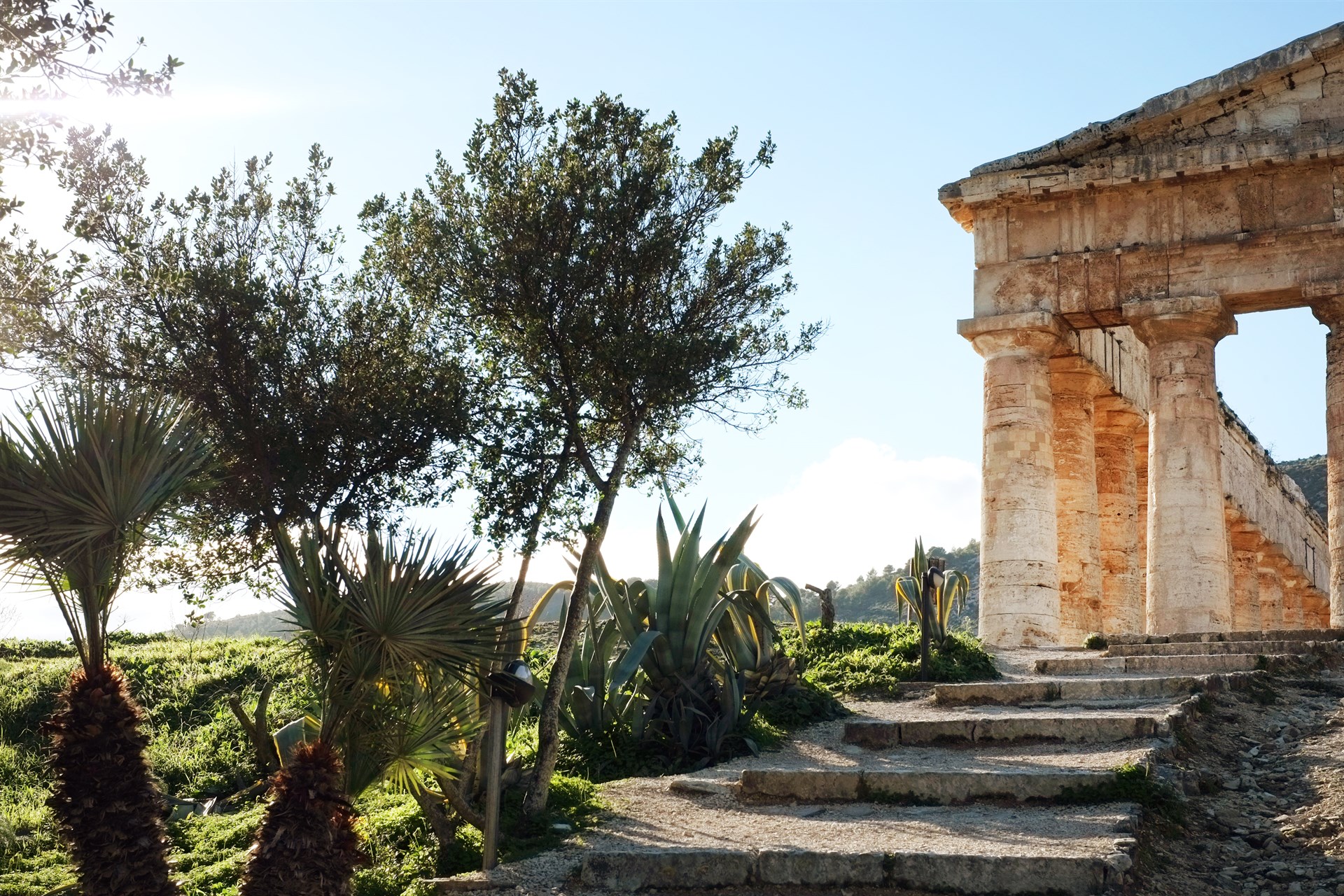
Discover our recommended archaeological sites to visit in Sicily.
Segesta
Attentive passengers driving along the motorway from Palermo to Trapani will, at one point, start to wonder if they're hallucinating. "I’m not sure but I think I just saw a Greek Temple over there...." It will be a fleeting image but no hallucination: it's the Temple of Segesta. If anyone needed yet more proof that the Greeks had a good eye for where to build, Segesta would lay any doubts to rest once and for all.
Indeed, the setting of the Temple, perched on a hill is simply beautiful: totally unspoiled rolling green countryside and views that stretch right down to the sea.
The Doric Temple, which is roughly 75km from Palermo, was not actually built by the Greeks, as may have been suggested rather imprudently in the opening paragraph, but by the Elymians, an indigenous population of Sicily who also founded Erice. It is true, however, that Greek colonists probably contributed to the building of the Temple, which took place between 430 and 420 BC. It has 36 Doric columns and is 61 metres long and 26 metres wide.
There is no roof, and it is thought that the locals were never able to entirely complete their place of worship due to an attack on the settlement of Segesta.
Up on top of a nearby hill, Monte Barbaro, sitting at 400m above sea level is the semicircular theatre, built around the same time. The wonderful views made stage scenery unnecessary as the surrounding countryside provided a natural backdrop to the action taking place on stage. Today, during the summer months, the theatre is used as a venue for Greek plays, concerts and other events. The walk up from the Temple may be a little taxing for some people but fortunately, there is a shuttle bus.
Insider tip: Why not take a picnic with you, sit down under an olive tree and enjoy the delightful surroundings to the full? After lunch you could pop along to the nearby Terme Segestane, an open-air spa with a couple of hot-water pools. Open from June to September, it is also possible to take a dip in the hot-water river where both Heracles and Aeneas stopped off to recoup their energies!
Selinunte
On the southwest coast of Sicily, not far from Mazara del Vallo, lies the largest archaeological site in Europe. On a par with pretty much anything found in Greece itself, Selinunte has lain abandoned for nearly 2,500 years, its numerous temples, its acropolis and its agora in dignified ruins.
From being one of the most progressive and eminent cities in Magna Graecia, in 409BC Selinunte was transformed, almost overnight, into a large expanse of rubble. The reason for this was an attack from the old enemy, the Carthaginians, who, for many years, had seen this upstart town as a threat to their influence in Sicily. Taking advantage of some trouble between the Greeks of Selinunte and the Elymians of Segesta, the Carthaginians sent some 100,000 men to lay siege to the town, which was only able to hold out for nine days. The subsequent sacking involved the massacre of some 16,000 of the town’s inhabitants while most of the remaining citizens were taken into slavery.
Selinunte is beautifully located, sitting on a high plain and overlooking the sea. It is flanked on either side by golden beaches and, being almost 1km wide, is an excellent excuse for a good walk, though it is also possible to get around on electric buggies.
There are two entrances to the archaeological site, one from Marinella di Selinunte to the east and one from Triscina to the west.
Villas in Sicily near Selinunte
Insider tip: Selinunte is a great day out for families with kids. Combine it with a visit to the beach at Marinella, where there is a great restaurant, La Pineta!
Find guided tours of Selinunte
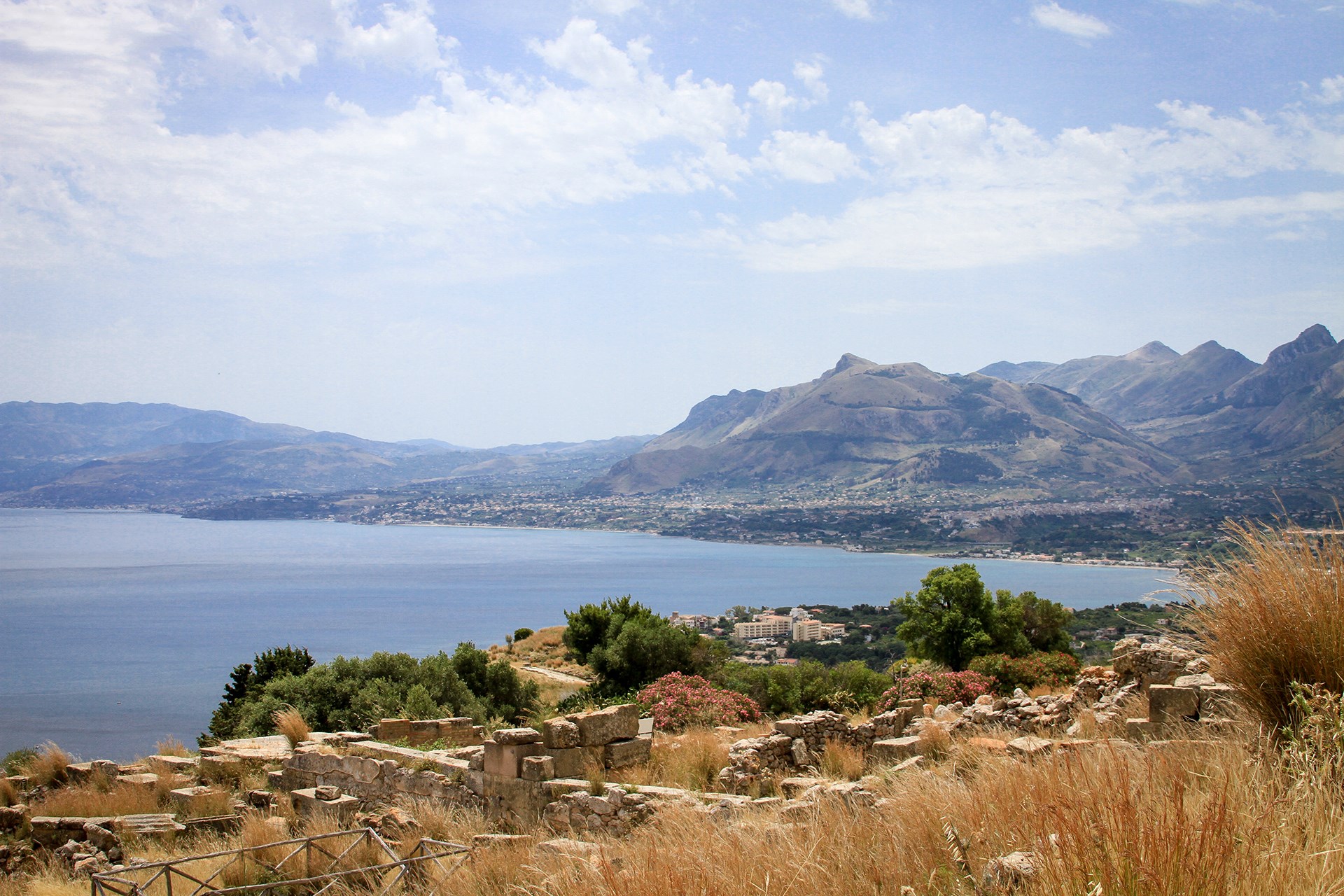
Solunto
High above the fishing town of Porticello, precariously perched on the edge of Mount Catalfamo sits Solunto, one of the myriads of fascinating archaeological sites in Sicily.
Situated just to the east of Palermo near Bagheria, Kfra, as Solunto was originally known, was, along with Mothya, Erice and Panormus (now Palermo), built by the Phoenicians in about 700BC.
As was his wont, Dionysius the Elder, Tyrant of Siracusa, sacked Solunto in 397BC before returning a year later to completely rebuild it. The Greeks were eventually usurped by the Romans in 254BC during the First Punic War and, according to Cicero, the town soon had the status of a civitas decumana or “large town”. For unknown reasons the town was slowly abandoned towards the end of the 3rd Century AD and was re-discovered only in the 16th Century. Excavations have continued ever since.
The views from Solunto are splendid, taking in vast swathes of the Tyrrhenian Sea, the cone-like promontory of Capo Zafferano and the fishing port of Porticello.
Dionysius built a classic Greek-style town – a grid network centring on the main thoroughfare Via dell’Agora which led to the marketplace. This street, which was widened by the Romans, divides the site into two distinct parts. While there are no complete buildings, one can get a sense of the layout and distinguish private habitations. One, the Casa di Leda, has a fascinating fresco showing Zeus in the guise of a swan seducing the lady in question. The Gymnasium, a patrician residence, still has a few extant Doric columns and a section of the entablature. Most of the houses were on two floors and often it is possible to see the staircases leading to now non-existent upper levels.
There are also remains of the Agora, the theatre (very difficult to make out) and an Odeon (a small theatre for musical performances). At the entrance, there is an Antiquarium containing some of the artefacts found during excavations at the site. The views from Solunto are splendid, taking in vast swathes of the Tyrrhenian Sea, the cone-like promontory of Capo Zafferano and the fishing port of Porticello.
Insider tip: After seeing the site, head to Porticello for lunch at Francu U Piscaturi in the main square.
_crop.jpg)
Syracuse
Syracuse (or Siracusa) was the most important city of Magna Graecia. It defeated the mighty Athens in 413 and was home to many a great Greek, including the inimitable Archimedes. At the height of its economic, political and military powers, the city had a population of 300,000 and, according to Cicero, was “the greatest Greek city and the most beautiful of them all”.
The archaeological site, situated in the northwest of the town, is home to a staggering number of well-preserved Greek (and Roman) remains. The main attraction is undoubtedly the Greek theatre that dates back at least until the 5th Century BC. Its cavea is amongst the largest ever built: its 59 rows could accommodate up to 15,000 spectators.
The Roman amphitheatre, built in the 3rd Century AD, is also very impressive. 140m long, it is one of the largest to be found anywhere. Its function was far removed from the Greek version. Here, traditional circus fare was offered, with gladiators and wild animals providing spectacles of blood-curdling violence. In the centre is rectangular hole that is thought to have had one of two purposes: a space for scenic machinery or a drain for the blood and gore!
The Archaeological Museum is just a stone’s throw from the archaeological park (in Via Teocrito) and contains a great collection of exhibits from all over the Syracuse area.
Explore Syracuse with a guided tour
.JPG)
Tindari
Driving along the Palermo-Messina motorway between Capo d'Orlando and Milazzo you will undoubtedly notice what seems to be a large church perched on a rock high above the sea. This is the Sanctuary of the Black Madonna of Tindari, a place of pilgrimage but also the site of an ancient Greek town.
The archaeological site
The southern part of the hill on which ancient Tindari stood is protected by the original Greek walls, but most of the remains are on the north-western sea-facing side. Here there are Roman habitations and baths, complete with wonderful floor mosaics and ingenious radiator heating systems. Further on is the Basilica, a fine example of Graeco-Roman architecture built around a series of arches, and the well-preserved theatre, built in the 4th Century BC. Complete with stunning views of the Tyrrhenian Sea, the Aeolian Islands, the tongue of sand and the Sicilian coastline, Tindaris is certainly one of the most interesting archaeological sites in Sicily.
The Black Madonna
The story of how the Black Madonna arrived in Tindari is the stuff that legends are made of. According to local tradition, the statue, which is certainly of Byzantine origin, was one of many works of art smuggled out of Constantinople in the 8th and 9th Centuries during the period of Iconoclasm initiated by Emperor Leo III. A storm forced the ship carrying the Black Madonna into the port of Tindari, where the sailors deposited their load at the local abbey for safekeeping. She now sits behind the altar with the inscription "nigro sum sed formosa" (black am I, but beautiful).
Another legend regarding the Black Madonna recounts how one pilgrim, on making some uncomplimentary remarks about the statue, incurred the not inconsiderable wrath of the Madonna. The lady in question turned in horror to see her child plummeting down the cliffs towards the sea. However, in an act of mercy and a demonstration of her unworldly powers, the Madonna made a bank of sand rise from the sea to cushion the child's fall. Hence the curious geographical formation of which more later.
The tongue of sand
Way below the archaeological site and the Sanctuary is the extraordinary "linguetta di sabbia", a sandbank stretching 1.5km into the sea, defiantly resisting the destructive, relentless raids of the Tyrrhenian. Clearly visible on satellite photos, the "tongue" is raised about 4 metres above sea-level in its highest points and creates a kind of lagoon on its land side. Several small lakes dot the surface and provide an ideal home for a large variety of flora and fauna (indeed it is now a nature reserve). All in all, somewhere we strongly recommend you to visit, whether it be for a swim or just an excellent walk.
.jpg)
The Necropolis of Pantalica
If you are staying in the Siracusa area and fancy a good walk with a difference, we recommend you head up to Sortino or Ferla in the Iblei mountains and explore the “Rocky Necropolis of Pantalica”, one of Sicily's many UNESCO Heritage Sites.
Home to some 5,000 burial chambers of considerable archaeological interest, Pantalica is also a place of great natural beauty, a deep limestone ravine carved out over millennia by the Anapo and Calcinara rivers.
The steep sides of the gorge give way to a fertile valley that supports a flourishing variety of flora including holm oaks, wild sage and thyme, giant fennel and plane trees. The fauna is no less impressive and you might well see foxes, porcupines, hares, kingfishers and peregrine falcons.
Villas in Sicily near Pantalica
The tombs themselves pepper the sides of the canyon and are an impressive sight. Built in two main periods between the 13th and the 8th Centuries BC, they are relatively small in size and either elliptical or rectangular in shape.
There are two main entrances to the valley, one from near Sortino, and the other from Ferla. The former involves a good walk down the sides of the gorge while the latter is more of a gentle stroll along a well-beaten path.
Whether you go out of archaeological interest or for the unspoiled natural beauty you will come away feeling that you’ve discovered something really special.
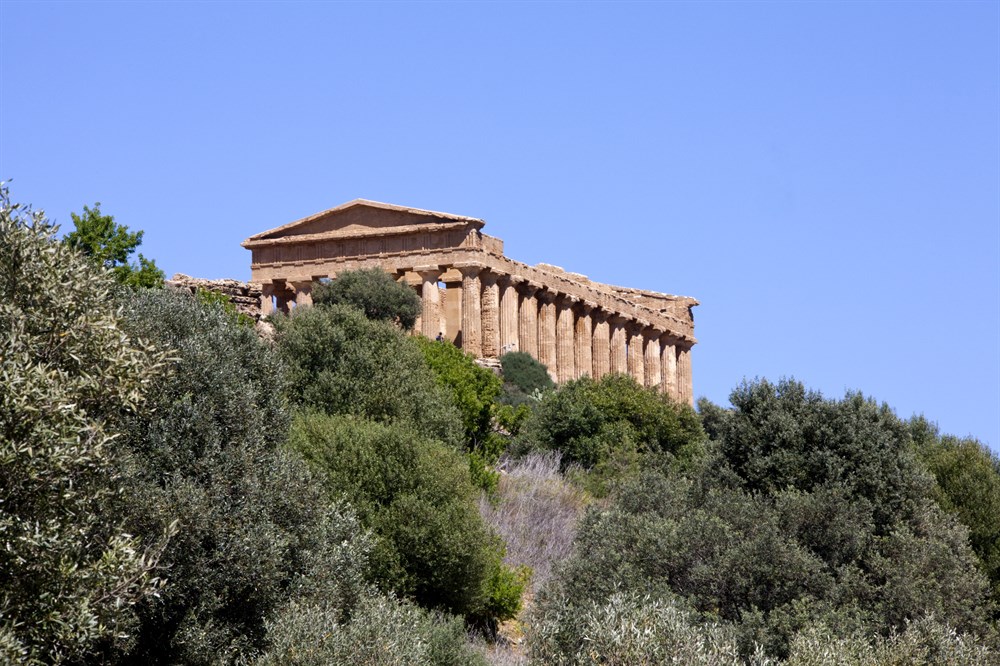
The Valley of the Temples Agrigento
One of Sicily’s most famous historical attractions is without a doubt the Valley of the Temples, just outside Agrigento. This splendid archaeological park consists of eight temples (and various other remains) built between about 510 BCE and 430 BCE: the Temple of Hera, the Temple of Concordia, the Temple of Heracles, the Temple of Olympian Zeus, the Temple of Castor and Pollux, the Temple of Hephaestos, the Temple of Demeter, and the Temple of Asclepius (the God of Medicine). Apart from this latter, which is to be found on the banks of the Akragas river, all are situated along a rocky crest below modern-day Agrigento.
Lovers of horticulture should head to the Garden of Kolymbethra, situated between the Temple of Castor and Pollux and the Temple of Vulcano. After years of abandonment, the Fondo Ambiente Italiano (the Italian National Trust) brought the garden back to its former fertile beauty. Its five hectares include a wonderful variety of flora including myrtle, lentisk, terebinth, broom, willow and white poplar trees, ancient varieties of lemon, mandarin and orange trees, mulberry bushes, prickly pears, and carob, almond and ancient Saracen olive trees.
While not being the prettiest city in Sicily, modern Agrigento is worth a brief visit, if only for the wonderful views it offers of the Valley of the Temples and the sea.
Insider tip: For a good lunch after viewing the temples, head for Leon D'Oro" in San Leone, on the coast south of Agrigento.
Discover guided tours of Agrigento
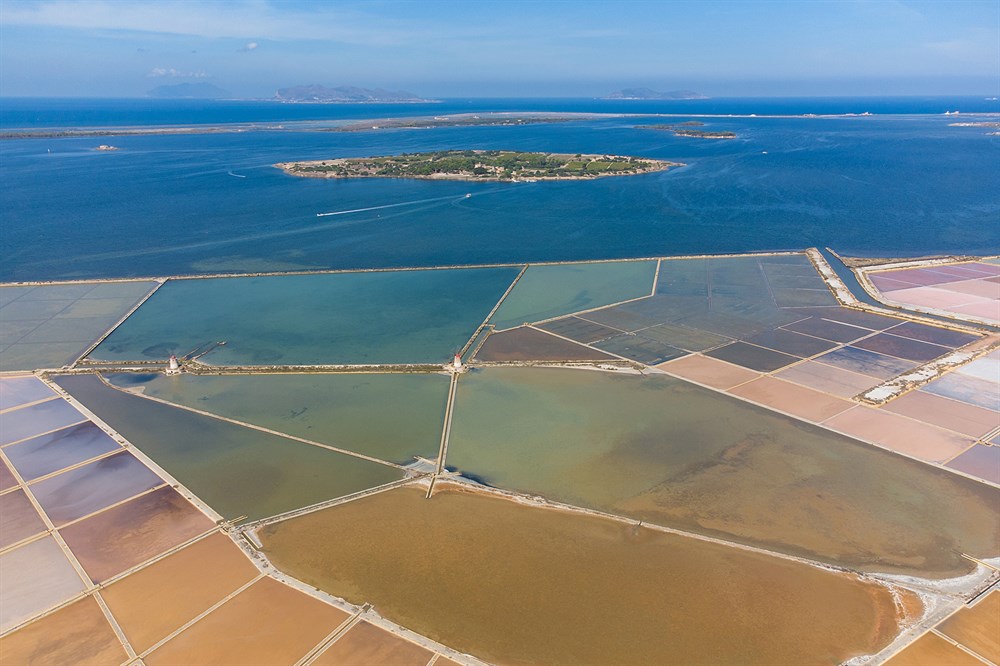
Mozia
The Stagnone Nature Reserve lagoon, lying midway between Trapani and Marsala on Sicily’s west coast, is home to a most peculiar mini archipelago, the centrepiece of which is the small island of Mozia (Mothya).
It was here, about 2,700 years ago, that the Carthaginians built a trade outpost and flourishing commercial town, which, along with present day Erice and Palermo, soon became one of their most important and thriving settlements.
Looking at the island today, one wonders if, at just 45 hectares, there was enough room for a fully-blown town. Archaeological research and the accounts of Diodorus of Sicily, however, have shown that the streets were narrow and the housing built relatively high, thus making the most of the limited space. The town was surrounded by strong defensive walls to ward off attacks from its Greek rivals in Sicily and a small artificial port, or cothon, accessed by a man-made canal, was constructed in the southern-most part of the island.
Most ingeniously of all, however, was the creation of an underwater causeway bedded into the shallow lagoon. This connected the north gate of the town to the mainland and allowed large-wheeled carts and horses to seemingly glide across the water. This causeway, a stunning feat of engineering, can just be made out on satellite photos.
After several hundred years of prosperity, in 397BC Mozia was besieged by Dionysius, the Greek Tyrant of Siracusa. After a long and difficult battle, in which the local populace defended their island with no little determination, the Greeks triumphed, sacked the town and put most of its residents to the sword. A year later, Himilco, the Carthaginian general, retook Mozia back but opted to build a new city, Lilibeo (now Marsala), on the mainland. Mozia continued to be inhabited by a few farmers, but its day was done.
Archaeological remains, many of which were discovered by Pip "Giuseppe" Whitaker of the the Marsala-making family who owned the island, include the “Cappidazzu”, a place for religious sacrifice, parts of the defensive walls, including the northern gate, a necropolis with several tombstones and the outlines of some wonderful villas, complete with splendid examples of extremely old mosaics made using black and white pebbles. A small but fascinating museum in the Villa Whitaker contains many artefacts of both North African (Carthaginian) and Greek origin, including a marvellous statue of a charioteer.
Getting across to the island couldn't be simpler: just head to the small, well-signed "Mozia" pier on the mainland, at the Saline Infersa, and hop on one of the frequent boats. In the Spring and early summer, Mozia is also a wonderful destination for a picnic...
Cave di Cusa
About 10km west of Selinunte is one of the Mediterranean's great archaeological secret: the Cave di Cusa.
It was 409BC when some unnerving news arrived at the stone quarry of Cusa: an immense Carthaginian fleet had been sighted sailing towards nearby Selinunte. War was certain.
The workers downed tools and fled, not knowing if they would ever return to complete their work. Both history and the quarries themselves tell us they didn't. Half-cut column sections remain attached to the mother stone, others lie strewn amongst the grass or in the surrounding olive orchards, awaiting in vain to be consigned.
All has remained exactly as it was on that fateful day in 409BC, making the Cave di Cusa one of the most fascinating spots in Sicily. Don't miss it and don't forget to take a picnic!
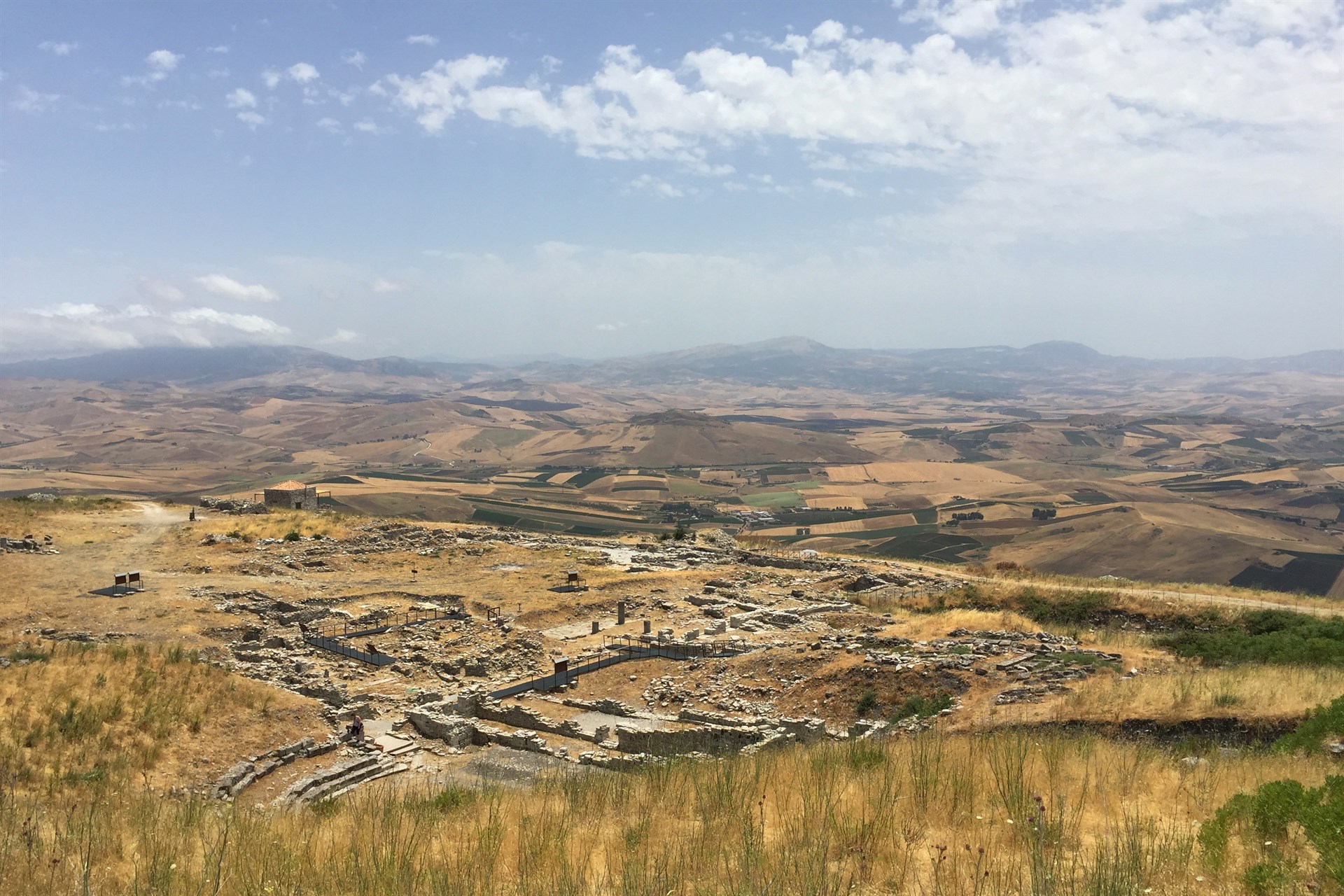
Iato
Iato (which has also gone by the name of Iaitas, Ietas, Iaeta, Jetae, Giato and Jato) may not be the most impressive or temple-rich archaeological site in Sicily, but it must rank as the most spectacularly positioned and the most panoramic. Perched vertiginously atop its own mountain at a height of 850m above sea level, Iato’s immense vistas fan out in all directions taking in Lake Poma and the Gulf of Castellammare to the north and vast swathes of the Sicilian countryside to the south, east and west. A precipitous drop off the north edge offers a bird’s eye view of the Belice Valley and the town of San Giuseppe Jato far below.
Spread over a site of some 40 hectares, the archaeological site of Iato is accessed via a 2km-long path from the car park. During the walk, you may well start to wonder how and why someone decided to build on top of what appears to be an inhospitable mountain. Then, as one passes the piles of rubble that were once lookout towers and houses, and arrives at the extensive high plain, it all becomes clear. The position of Iato was perfectly suited for controlling the Valley of the Belice, the main route between Selinunte in the south, and Palermo in the north.
The ruins of Iato, which were first excavated in the early 1970s by a group of archaeologists from the University of Zurich, are plentiful, various and unique for their millennial stratification. There is evidence of numerous architectural styles, remains from multiple different eras and a town plan whose evolution and expansion over the centuries are fascinating to trace.
Remains of medieval houses remind us that Iato was still thriving until the middle of the 13th century, but the core and the soul of the town are Greek. Signs of Hellenistic culture and religion are evident in the remains of a mid-6th century BC Temple of Aphrodite, an agora dating back to around 300BC, a 2nd century BC bouleuterion (council chamber) and, perhaps most impressively, a theatre carved out of the hillside, whose cavea could seat up to about 4,500 spectators.
After you’ve finished admiring and exploring the ruins, scramble up to the top of the hill behind the theatre, where an incomparable look-out point awaits. While memories of the archaeological ruins might fade with time, you will never, ever forget the views!
Insider tip: The archaeological site of Iato has lots to offer, but is also an excellent spot for a picnic. Why not pick up some sandwiches or rosticceria on your way there and enjoy a fabulous al fresco lunch with a view?
